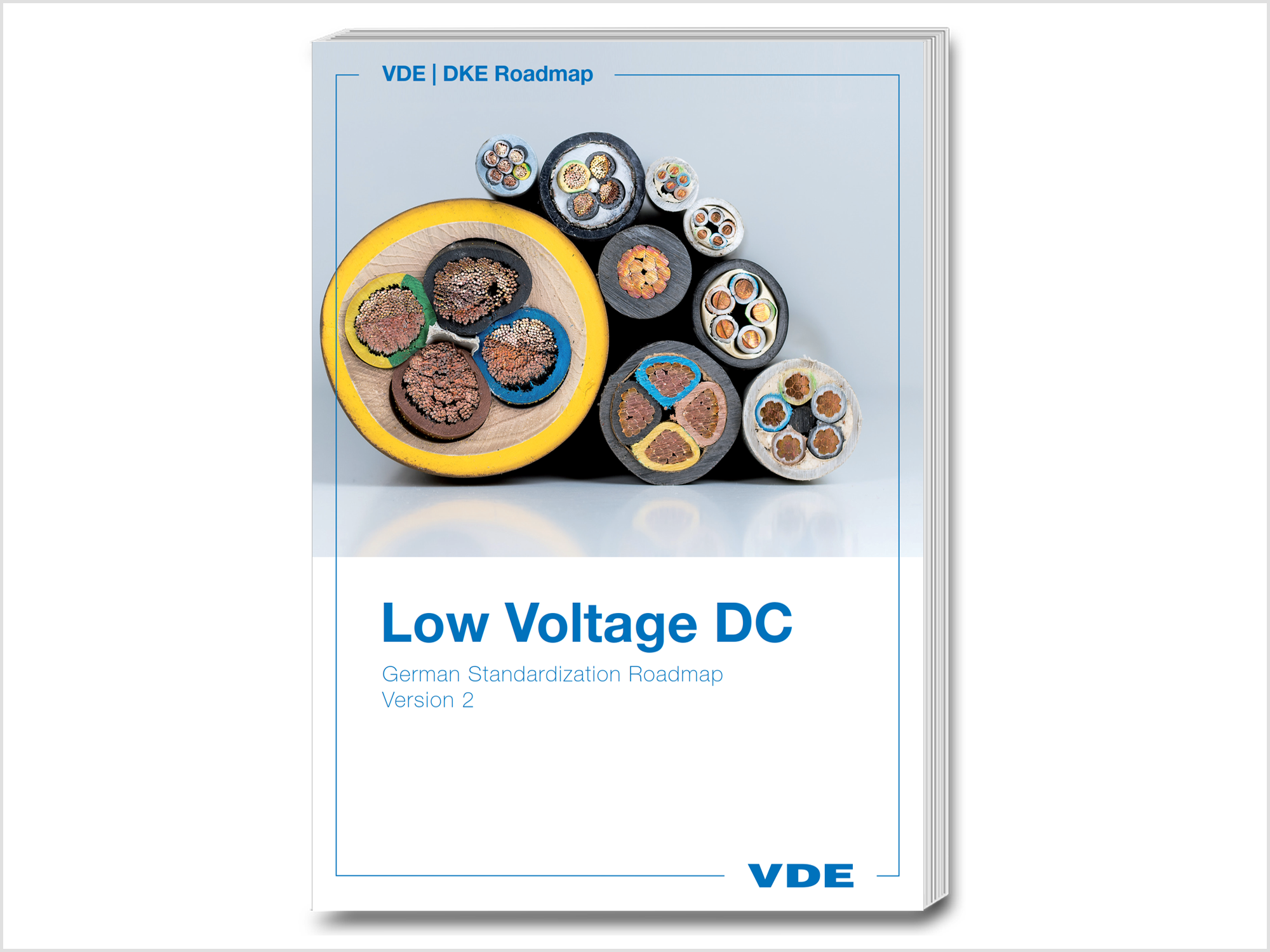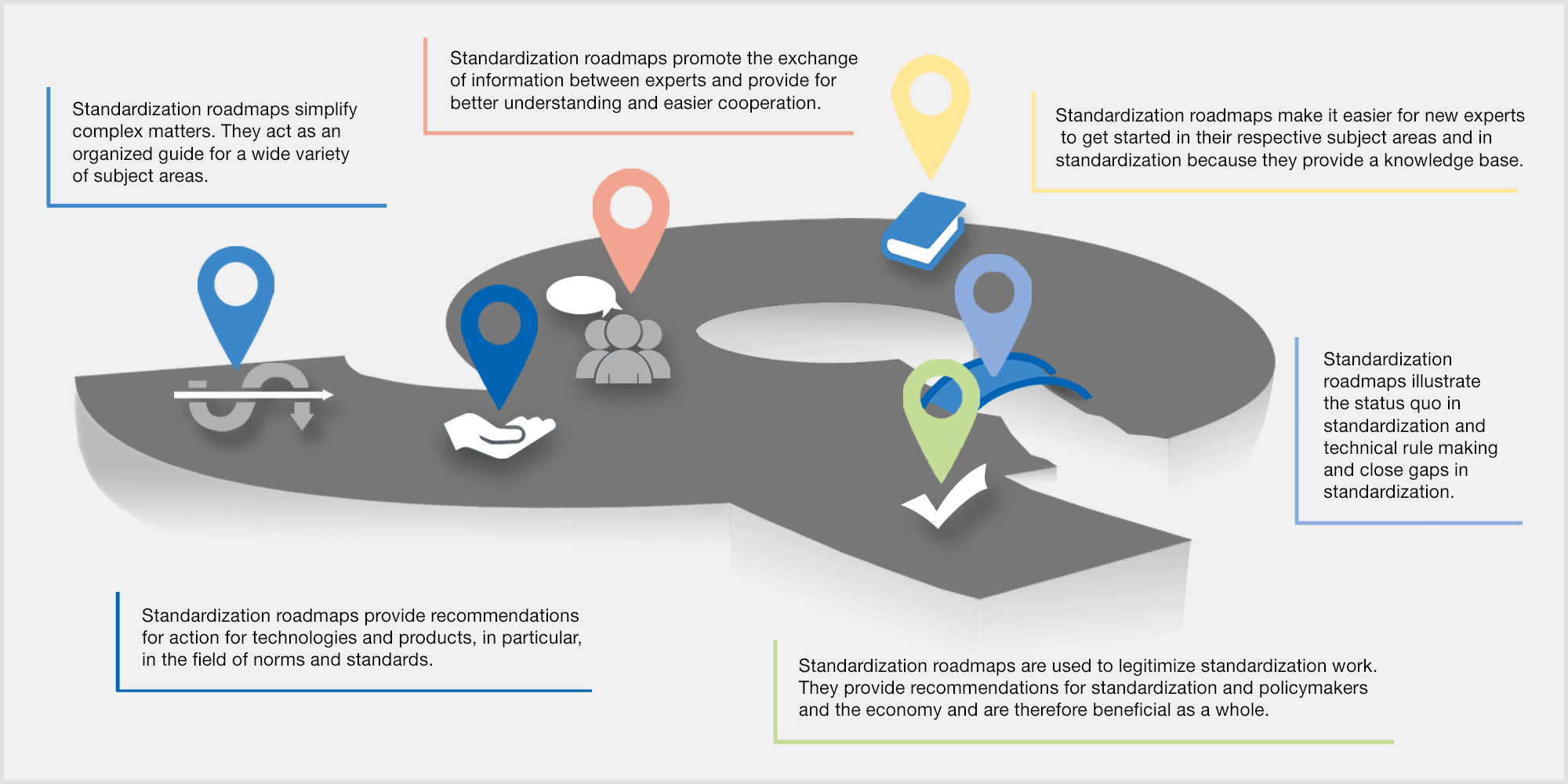The objective of standardization roadmaps is to inform the stakeholders in the respective subject area of important basic requirements and assist them in meeting them. To achieve this, standardization roadmaps provide an overview of the respective technology topic, in this case direct current in the low-voltage range, and the related standardization landscape and its organizational and content-related further development.
For direct current in the low-voltage range, standardization roadmaps also allow for the systematic processing of convergent technologies (cross-committee complex topics) and act as a basis for discussion and exchange between the experts from various domains (e.g. automotive, IT, energy). They thus provide for better understanding because they provide all of the participants the same foundation and offer new committee members a subject-related introduction.
Particularly with respect to important subject areas like direct current in the low-voltage range, standardization roadmaps emphasizes the need for early development and the significance of the topic of full consensus standardization.












